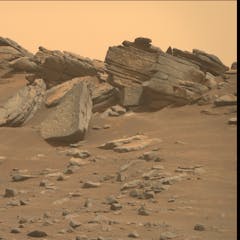
Articles on Space exploration
Displaying 1 - 20 of 295 articles

Starliner is only the second vehicle to launch astronauts from US soil since the retirement of the shuttle in 2011.

China’s Change'6 is going to explore the Moon’s far side and bring back precious lunar soil for scientists to study.

China’s new mission could answer longstanding questions about the Moon.

New ideas will be key to making the mission happen after a report criticised its timescale and cost.

The Perseverance rover has arrived at what’s thought to be an ancient shoreline on Mars.

Space exploration is not a waste of resources, but a source of technological and medical advances, a tool for climate monitoring and a source of educational inspiration for youth.

A type of eclipse is crucial for measuring what’s in the atmospheres of planets orbiting distant stars.

An instrument on the Europa Clipper mission might be able to detect biological cells from space.

The Solar System could be awash with oceans, not on the surface but hidden inside the most surprising bodies

The eclipse will allow scientists to get rare measurements of the Sun’s atmosphere.

Determining whether or not life exists on another planet is an extraordinarily complicated – and expensive – scientific endeavor.

If we need to use forensic techniques in space, we’ll need to understand how things behave differently in microgravity.

The next generation of spacesuit needs to do more than simply protect an astronaut from the vacuum of space.

Has Jeff Koons’ latest high-profile stunt just proved that space is the new frontier for art?

The discovery raises big questions about widely accepted models of galaxy formation.

The mission provided details about how to deflect an asteroid should one threaten Earth in future.

The extreme object could tell us more about the environment around black holes.

The observation could fill in gaps in our knowledge about planet formation.

Spaceplanes seemed out of favour when the shuttle was retired in 2011; they now seem to be making a comeback.

Mars has been a popular destination since space exploration began – and there are plenty of people who’d love to go there.
